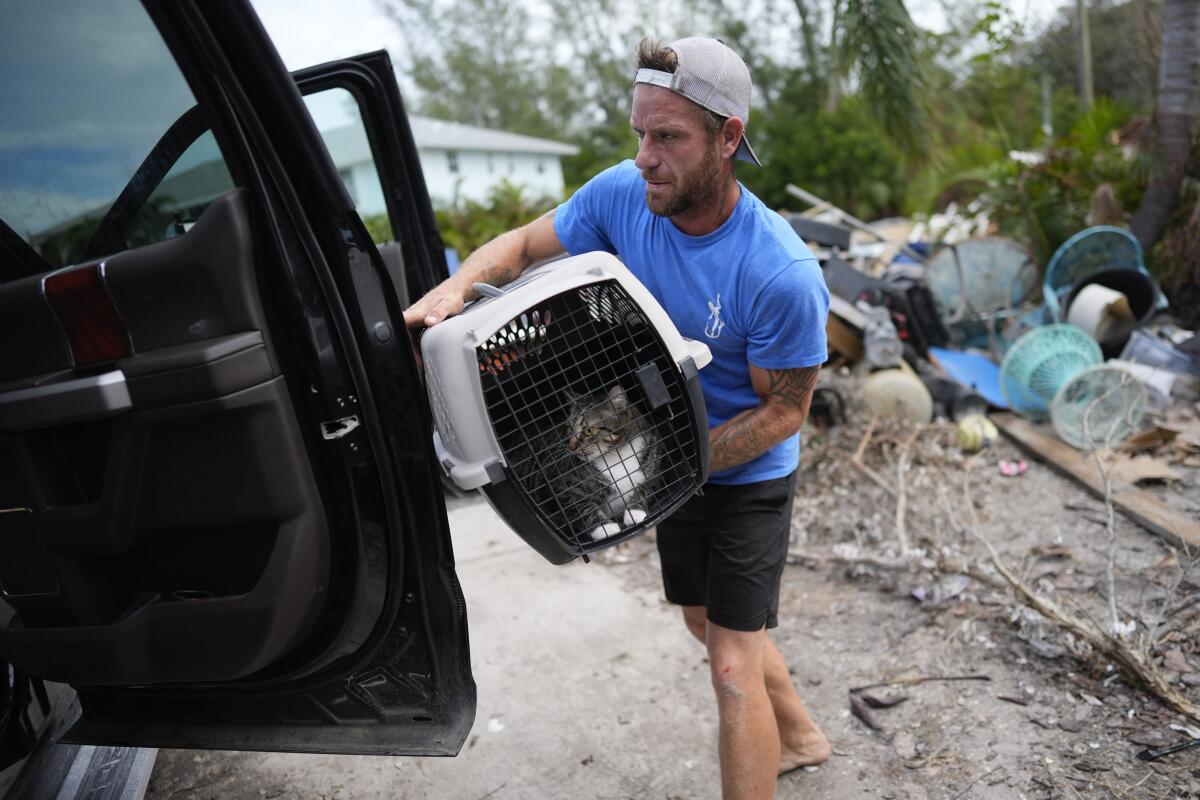OCALA, Fla. —
Hurricane Milton was bearing down on Florida’s Tampa Bay in what forecasters were saying could be a once-in-a-generation storm.
The hurricane was listed at Category 5 as it raced through the Gulf of Mexico and toward Florida’s west coast.
It was expected to make landfall late Wednesday or early Thursday. Officials say the Tampa Bay region could face a direct hit, but the exact path of the storm remains unclear.
More than 5 million people have been told to evacuate in one of the biggest such orders in Florida history.
National Hurricane Center forecasters in Miami warned residents there would not be enough time to evacuate if they waited until Wednesday morning to leave.
“Milton has the potential to be one of the most destructive hurricanes on record for west-central Florida,” forecasters wrote.

Ted Carlson puts his friend’s cat in a truck as he evacuates Holmes Beach on Anna Maria Island in Florida on Tuesday. Debris from Hurricane Helene is piled behind him.
(Rebecca Blackwell / Associated Press)
The National Weather Service said to expect a “major hurricane and the strongest in West Central Florida for 100 years. We can still expect … potentially catastrophic storm surge impacts regardless of strength when Milton makes landfall, in addition to destructive winds extending from the coast to inland locations along with heavy rainfall with possible flash flooding.”
A big concern is massive storm surges. “Life threatening storm surge is expected Wednesday into Thursday,” the weather service said. Points along the state’s west coast could see a surge of up to 15 feet: “Potential peak surge amounts are 10 to 15 feet from the Anclote River to Englewood, 8 to 12 feet from Englewood to Bonita Beach, 5 to 10 feet from the Anclote River to Chassahowitzka, 3 to 5 feet from Chassahowitzka to Yankeetown, and 2 to 4 feet from Yankeetown to the Suwannee River.”
The northbound lanes of Interstate 75, which runs west from Fort Lauderdale to Naples before heading north through Tampa and into Georgia, were gridlocked for much of Monday and into Tuesday morning.
Congestion on the interstate and other major roads continued to hamper evacuation efforts Tuesday afternoon. Highway shoulders were being used as additional lanes, and tolls were suspended in an effort to help people evacuate quickly.
Just two weeks ago, Hurricane Helene entered Florida’s Big Bend region late on Sept. 26 as a Category 4 storm, eventually claiming more than 230 lives as it left a trail of devastation from Florida to Tennessee.



